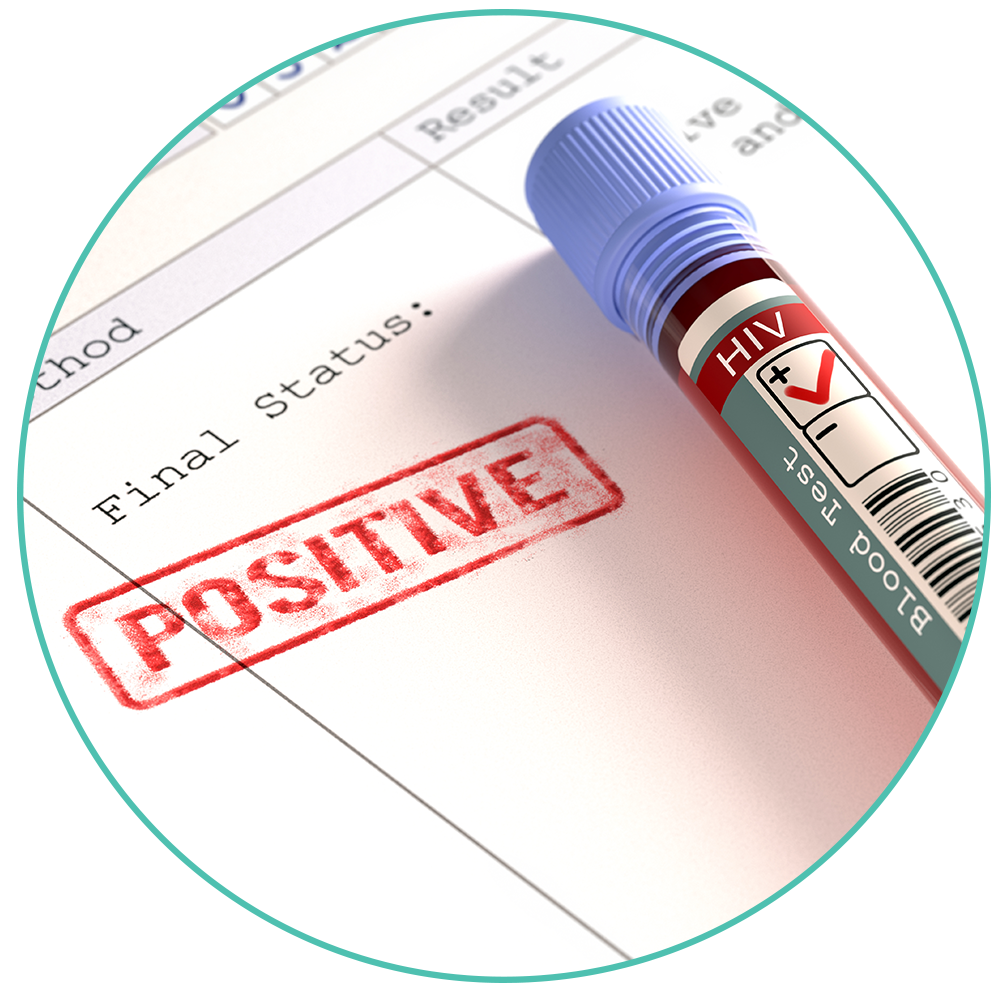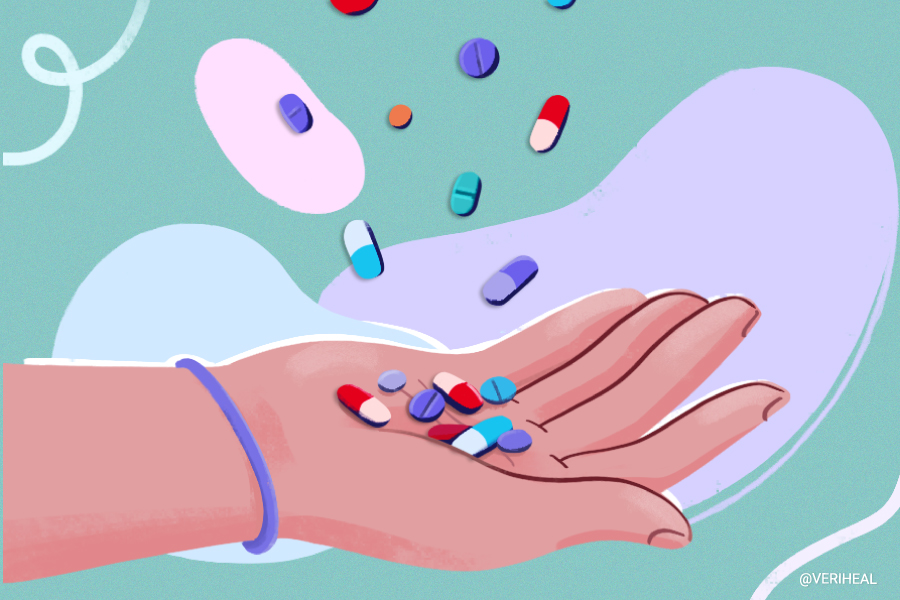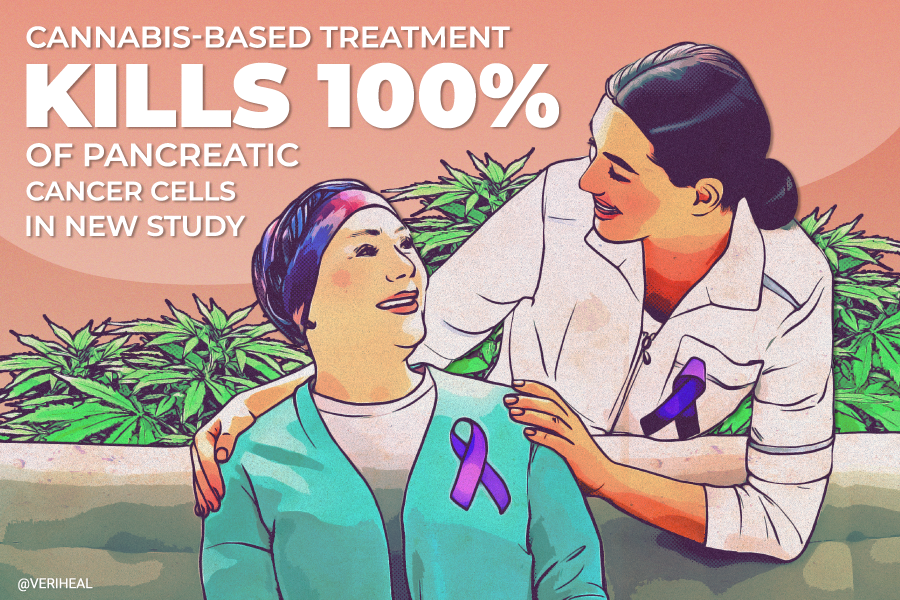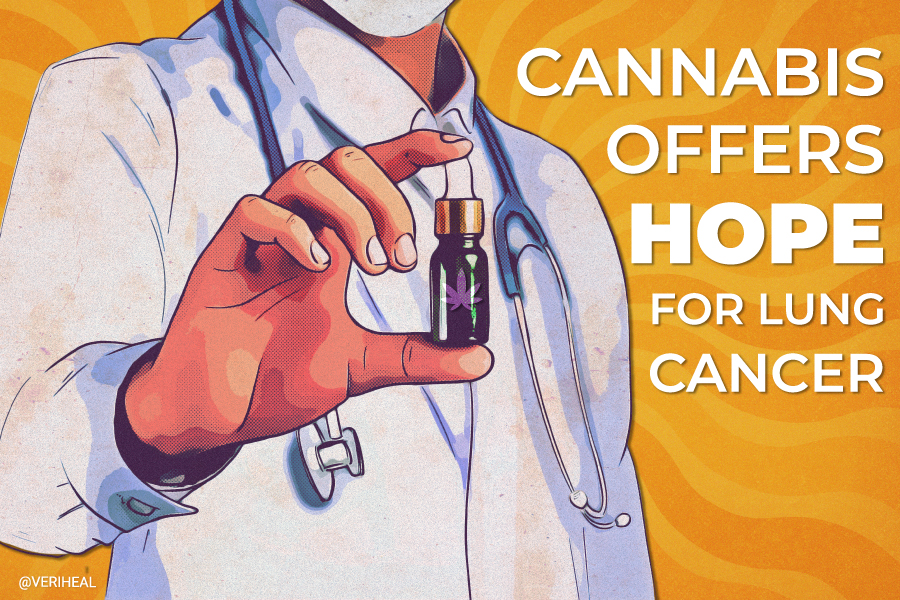HIV/AIDS and Medical Marijuana Treatment
- What are the Signs, Symptoms, and Types of HIV/AIDS?
- Are Cannabinoids a Good Treatment Option for HIV/AIDS?
- How Does the Endocannabinoid System (ECS) Play a Role in Treating HIV/AIDS?
- What Cannabis Preparations are Suitable for HIV/AIDS?
- Talking to Your Doctor About HIV/AIDS Treatments
- Complementary Treatments Worth Discussing With Your Doctor
HIV (human immunodeficiency virus) is a virus that lashes out on the body’s immune system. It affects 38.4 million people around the world and without treatment may result in acquired immunodeficiency syndrome (AIDS) – a potentially life-threatening condition that emerges once HIV causes severe damage to the immune system (23, 16)
Originally, the infection transpired in humans from a type of chimpanzee in Central Africa. Research published by the Center for Disease Control and Prevention (CDC) indicates that HIV may have been transmitted to humans from chimpanzees some time in the late 1800s (7).
Fortunately, a number of medications are available for HIV patients. Some medications focus on reducing the symptoms, whereas more advanced methods of treatment can reduce viral load and ultimately lengthen patient lifespan.
The synthetic cannabinoid dronabinol was FDA approved in 1992 for increasing appetite related to weight loss in HIV/AIDS patients. Interestingly its approval was mostly based on a small study of only 139 patients that supported these findings (21).
So it logically makes sense that an upcoming type of plant medicine for HIV is cannabis, with some of the plant’s active cannabinoids believed to harbor immense anti-inflammatory effects that are relevant to HIV infection. People with HIV also reportedly use cannabis to help relieve nausea, sleep disorders, musculoskeletal and neuropathic pain, anxiety, and depression (11).
Research hypothesizes that the green plant is also an effective option for treating weight loss, controlling pain, fulfilling therapy goals, and reducing inflammation among people who are living with HIV (11). Imagine how much more research there also is for other conditions and cannabis so far that are still lacking approval despite a larger research base than dronabinol.
Cannabis compounds are also purported to give the immune system a boost in certain circumstances, but it may be detrimental in other infections. Just what do we know about cannabis’ suitability as a treatment option for HIV/AIDS? Let’s find out.
What are the Signs, Symptoms and Types of HIV/AIDS?
The only definitive way to know if you are carrying HIV is to get tested. Basing a diagnosis on symptoms alone is simply not possible, since many of the signs of HIV are similar to those associated with other medical conditions, diseases, and illnesses.
Making yourself aware of your HIV status will grant you the opportunity to inform a new, existing, or previous sexual partner about your health. After testing positive, you will need to follow some essential rules to better maintain your and your partner’s health.
According to information published on HIV.gov, many people with HIV experience symptoms (14). Flu-like symptoms typically emerge 2-4 weeks after a person becomes infected. While some people will have symptoms for just a few days, others might display symptoms for a number of weeks.
Some of the most commonly reported initial symptoms of HIV infection include:
- Headache
- Muscle aches and joint pain
- Rash
- Rapid weight loss
- Coughing
- Shortness of breath
- Sore throat and painful mouth sores
- Swollen lymph glands
- Diarrhea
- Weight loss
If you receive a HIV diagnosis from your doctor or healthcare provider, you will likely be instructed to take HIV medicine, better known as antiretroviral therapy (ART). ART is actually a modern marvel of medicine, and used to be known as HAART (highly active antiretroviral therapy). Thanks to ART, people with HIV can now live normal lifespans.
The AIDS crisis was a historical and momentous public health epidemic that prompted the public to mount pressure on the government leaders to create new medicines for HIV/AIDS. ART has advanced a long way to become a life-saving medication today mainly inspired through the work of HIV awareness advocacy beginning in the 1980s.
Prescribable meds of this kind maintain an undetectable viral load, meaning that diagnosed patients can continue to lead a fairly normal life and will not risk transmitting the virus to others through sexual contact.
Should you feel uneasy about visiting a doctor for a HIV diagnosis, you might want to purchase a self-testing kit. A self-testing kit purchased online or from a pharmacy can be used from the comfort of your own home with the utmost discretion. Free or reduced price self-test kits may also be provided by your doctor or local health department.
HIV/AIDS: Causes and Complications
HIV infection occurs through exposure to a contagious virus that is spread through sexual contact, contact with infected blood, from mother to child during the pregnancy, birth, or by breastfeeding, and/or the sharing of needles for illegal drug use.
White blood cells known as ‘CD4 T cells’ play a significant role in helping the body to ward off disease. Unfortunately, HIV obliterates these cells in large quantities, thus hindering the body’s natural ability to stay healthy (17).
Failure to get treatment for HIV will prompt the onset of symptoms in three separate stages. Fortunately, thanks to advancements in HIV/AIDS treatments, accessibility, and prevention strategies, the chances of developing Stage 3 (AIDS) is much less common nowadays.
The three stages are as follows:
Stage 1: Acute HIV Infection
This is the earliest stage of infection. During stage one, the HIV infection spreads through the blood in copious amounts. Flu-like symptoms tend to transpire during stage 1, at which point the infection is highly contagious.
Stage 2: Chronic Infection
Otherwise known as ‘asymptomatic HIV infection’ or ‘clinical latency’, the second stage does not necessarily lead to Stage 3 (AIDS). However, the virus remains in its active state and continues reproducing throughout the body.
Although symptoms are not always present during stage 2, stage 2 can linger for one decade or in some cases, even longer. Fast progression of the disease will usually trigger a rise in viral load (the amount of HIV contained in the blood), which will lead to Stage 3 (AIDS).
Stage 3: Acquired Immunodeficiency Syndrome (AIDS)
This is by far the most serious stage of HIV infection and it is diagnosed when the CD4 T cell count sinks below 200. When HIV progresses to stage 3, the immune system becomes badly compromised. Since the risk of infections and illnesses is higher in patients with AIDS, the survival rate without ART treatment is very low.
According to Public Health research, “Most patients who receive HAART will survive for >10 years after the onset of AIDS, whereas the majority of the patients who do not receive HAART die within 2 years of the onset of AIDS (18).” This highlights the importance of starting and sticking to ART medications as soon and consistently as possible..
Are Cannabinoids a Good Treatment Option for HIV/AIDS?
No cure currently exists for AIDS. However, today’s medication is so good that it can be taken to lengthen lifespan back to normal and reduce the chances of the infection worsening to stage 3 (full-on AIDS). Strictly adhering to antiretroviral regimens (ARVs) as prescribed by your doctor can reduce the chances of the disease progressing, not to mention minimize the risk of complications and secondary infections.
The good news is that cannabis-derived cannabinoids could help to relieve symptoms and possibly prevent complications. Cannabinoids have demonstrated promise for impeding productive HIV infection in primary human T cells. Research suggests that cannabinoid type 2 receptors (CB2 receptors) and endocannabinoid catabolic enzymes act as promising therapeutic targets in HIV-1 patients. Plus, CB2 agonists may also perform as immunomodulators on HIV-1-infected macrophages (19).
A mini-review, titled “The therapeutic role of cannabinoids in neuroHIV” confirmed that cannabis’ influence on cognition in HIV-1 is dependent on numerous factors, such as the quantity of cannabis consumed, the level of disease progression, and cognitive domain assessment (24).
According to the literature review of a 2019 study proposal published in BMJ Open, orally-consumable cannabis oils may help to strengthen the immune system in people with HIV (10). Unfortunately this study was canceled in 2022 before results could be published (5). However, other studies show the non-psychoactive cannabinoid cannabidiol (CBD) has also been shown to relieve oxidative stress (3).
Conversely, a PubMed report indicated that, in addition to reducing HIV production, cannabinoids possess immunological properties (19).
Interestingly, a double-blind clinical trial from 2003 showed an average 15% reduction in viral load for dronabinol and THC application versus placebo (1). The study included 67 patients and took place over 21 days. Smoked and oral cannabinoids did not seem to be unsafe in people with HIV infection with respect to HIV RNA levels, CD4+ and CD8+ cell counts, or protease inhibitor levels.
Since some HIV patients will experience HIV wasting syndrome, an unplanned weight loss exceeding 10% of body weight that is accompanied by weakness, fever, or diarrhea and continues for 30+ days, the psychoactive cannabinoid THC (tetrahydrocannabinol) could prove useful for increasing appetite (12).
Patients may use cannabis to try to ease their diarrhea, and more commonly for symptoms such as nausea, sleep disorders, musculoskeletal and neuropathic pain, anxiety, and depression (11). Dronabinol is FDA-approved synthetic THC that is used to improve appetite and weight gain in HIV/AIDS patients (21).
A small 2010 clinical study of 7 patients showed that despite sustained increases in self-reported food cravings, dronabinol only increased caloric intake in the initial 8 days of dosing (4). Similarly, sleep quality was improved only in the first 8 days of dosing. Dronabinol’s mood-enhancing effects were sustained across the 16-day inpatient stay.
Numerous research efforts have spotlighted THC’s ability to stimulate feelings of hunger. Once the mind-altering cannabinoid interacts with the CB1 receptor, it promotes the release of the hormone ghrelin, which is responsible for influencing feelings of hunger (20). It should be noted that THC can cause impairment.
How Does the Endocannabinoid System (ECS) Play a Role in Treating HIV/AIDS?
HIV neuropathogenesis modifies the endocannabinoid system (ECS), meaning that this complex cell signaling network could play an essential role in treating the virus. One particular study, titled, “Targeting the endocannabinoid system for management of HIV-associated neuropathic pain: A systematic review,” dug deeper into the subject (2).
The research report sought to assess the efficacy of molecules that modulate the endocannabinoid system (ECS) for the prevention and/or treatment of pain in HIV-NP animal models and patients with HIV-NP. A total of 117 articles were pulled from PubMed and 9467 from Google Scholar search.
Based on the preclinical results, “targeting the ECS for prevention and treatment of HIV-NP is a plausible therapeutic option.” THC and dronabinol have shown some effect on viral load themselves, with about a 15% reduction over placebo in a single double blind trial from 2003 (1). Other research has shown much potential for symptomatic relief as mentioned above (11).
What Cannabis Preparations Are Suitable for HIV/AIDS?
One of the main perks associated with medical cannabis use to treat HIV/AIDS symptoms is the diversity in terms of product options. Various cannabis preparations are available, including the following:
- Edibles
- Oral sprays
- Smoked cannabis
- Pills, capsules, and tablets
- Powder Cannabis powder
- Transdermal Patches
- Vapes
- Tinctures
- Rectal and vaginal suppositories
Inhalational methods and transdermal patches may be advantageous to patients with severe nausea who cannot tolerate taking food or drink by mouth. Rectal suppositories are also advantageous in this regard for special populations. They are more commonly used in geriatric or palliative settings due to ease, practicality, better absorption, and avoiding airway side effects.
Talking to Your Doctor About HIV/AIDS Treatments
A person who is wondering about their HIV status should start by talking to their primary care doctor or OB/GYN. After a diagnosis and initiation of treatment, you may also visit a doctor who is board certified in internal medicine (IM) with a subspecialty in infectious disease (ID), or a maternal fetal medicine (MFM) specialist if you are pregnant (22). It is especially important to get a diagnosis and treatment for HIV/AIDS if you are pregnant, since the risk of transferring the virus to your young will reduce to 1% if you use prescribed meds (14).
There are numerous types of medications that can be consumed to help manage HIV and prevent further complications from arising. These medications are referred to as antiretroviral therapy (ART), which combines two (or more) medications into a single pill.
Everyone who suffers from HIV infection, whatever the CD4 T cell count or symptoms may be, ought to receive antiviral medication. The main classes of HIV drugs include non-nucleoside reverse transcriptase inhibitors (NNRTIs), nucleoside or nucleotide reverse transcriptase inhibitors (NRTIs), integrase inhibitors, protease inhibitors (PIs), and entry or fusion inhibitors.
These medications are lifesaving and important to take regularly as prescribed in order to keep the virus in check and prolong survival. However, they do commonly come with a host of side effects that are unpleasant (13). Those side effects can include nausea, vomiting, abdominal pain and stomach upset, diarrhea, oral ulcers, muscle aches, loss of appetite, peripheral neuropathy, insomnia, anxiety, and sleeping difficulties.
Thankfully, these adverse effects could possibly be helped by cannabis as described in this 2020 review (11). Additionally, a 2009 double blind human trial proposed that cannabis is effective as an HIV self-care strategy in treating anxiety and depression, diarrhea, fatigue, and neuropathy (9).
To further boost your immune system, it might be worth discussing medical cannabis treatments with a doctor or specialist. However, it’s important to note that the medical use of cannabis should not be considered a substitute for other types of doctor-prescribed medications.
Complementary Treatments Worth Discussing with Your Doctor
Although antiretroviral treatments are typically quite successful in cases of HIV/AIDS, the use of complementary and alternative medicine (CAM) is common for side effect management and quality of life. Currently, there is limited evidence to prove the success rate, safety, and efficacy of antiretroviral treatments, but this is not to say that alternative healing resources should be overlooked when used alongside conventional anti-HIV treatments.
A research report published in the Journal AIDS Care found that a high amount of HIV+ patients (median of 60%) report using complementary medicine (15). Examples of complementary medicine that are generally welcomed in cases of HIV/AIDS include acupuncture, herbs, massage, meditation, supplements, vitamins, and yoga. Combined, these CAM’s could help to enhance physical and mental health.
Even if you test negative for HIV, it’s important to seek out prevention tools to minimize exposure. Some examples include pre-exposure prophylaxis (PrEP) and post-exposure prophylaxis (PEP), the latter of which is a type of medicine that can be administered within 72 hours after suspected exposure to prevent HIV seroconversion (6). The CDC also has further public health recommendations for lowering your risk of contracting HIV (8).
Regardless of the fact that medical marijuana and other types of complementary medicine may harbor therapeutic qualities that could improve quality of life for HIV and AIDS patients, it’s crucial that you continue using any medication(s) that are prescribed by your doctor.
Note: The content on this page is for informational purposes only and is not intended to be professional medical advice. Do not attempt to self-diagnose or prescribe treatment based on the information provided. Always consult a physician before making any decision on the treatment of a medical condition.
1. Abrams, D. I., Hilton, J. F., Leiser, R. J., Shade, S. B., Elbeik, T. A., Aweeka, F. T., Benowitz, N. L., Bredt, B. M., Kosel, B., Aberg, J. A., Deeks, S. G., Mitchell, T. F., Mulligan, K., Bacchetti, P., McCune, J. M., & Schambelan, M. (2003). Short-term effects of cannabinoids in patients with HIV-1 infection. Annals of Internal Medicine, 139(4), 258. https://pubmed.ncbi.nlm.nih.gov/12965981/
2. Aly, E., & Masocha, W. (2021). Targeting the endocannabinoid system for management of HIV-associated neuropathic pain: A systematic review. IBRO Neuroscience Reports, 10, 109–118. https://pubmed.ncbi.nlm.nih.gov/34179865/
3. Atalay, S., Jarocka-Karpowicz, I., & Skrzydlewska, E. (2019). Antioxidative and anti-inflammatory properties of Cannabidiol. Antioxidants, 9(1), 21. https://www.ncbi.nlm.nih.gov/pmc/articles/PMC7023045/
4. Bedi, G., Foltin, R. W., Gunderson, E. W., Rabkin, J., Hart, C. L., Comer, S. D., Vosburg, S. K., & Haney, M. (2010). Efficacy and tolerability of high-dose dronabinol maintenance in HIV-positive marijuana smokers: A Controlled Laboratory Study. Psychopharmacology, 212(4), 675–686. https://www.ncbi.nlm.nih.gov/pmc/articles/PMC3325767/
5. Cannabinoids in PLWHIV on effective art – full text view. Full Text View – ClinicalTrials.gov. (n.d.). Retrieved November 10, 2022, from https://clinicaltrials.gov/ct2/show/NCT03550352
6. Centers for Disease Control and Prevention. (2021, May 25). Pep. Centers for Disease Control and Prevention. Retrieved November 10, 2022, from https://www.cdc.gov/hiv/basics/pep.html
7. Centers for Disease Control and Prevention. (2022, June 30). About HIV/AIDS. Centers for Disease Control and Prevention. Retrieved November 10, 2022, from https://www.cdc.gov/hiv/basics/whatishiv.html
8. Centers for Disease Control and Prevention. (n.d.). What can decrease HIV risk? Centers for Disease Control and Prevention. Retrieved November 10, 2022, from https://hivrisk.cdc.gov/can-decrease-hiv-risk/
9. Corless, I. B., Lindgren, T., Holzemer, W., Robinson, L., Moezzi, S., Kirksey, K., Coleman, C., Tsai, Y.-F., Sanzero Eller, L., Hamilton, M. J., Sefcik, E. F., Canaval, G. E., Rivero Mendez, M., Kemppainen, J. K., Bunch, E. H., Nicholas, P. K., Nokes, K. M., Dole, P., & Reynolds, N. (2009). Marijuana effectiveness as an HIV self-care strategy. Clinical Nursing Research, 18(2), 172–193. https://pubmed.ncbi.nlm.nih.gov/19377043/
10. Costiniuk, C. T., Saneei, Z., Routy, J.-P., Margolese, S., Mandarino, E., Singer, J., Lebouché, B., Cox, J., Szabo, J., Brouillette, M.-J., Klein, M. B., Chomont, N., & Jenabian, M.-A. (2019). Oral cannabinoids in people living with HIV on effective antiretroviral therapy: CTN PT028—study protocol for a pilot randomised trial to assess safety, tolerability and effect on immune activation. BMJ Open, 9(1). https://www.ncbi.nlm.nih.gov/pmc/articles/PMC6340429/
11. Ellis, R. J., Wilson, N., & Peterson, S. (2021). Cannabis and inflammation in HIV: A review of human and Animal Studies. Viruses, 13(8), 1521. https://www.ncbi.nlm.nih.gov/pmc/articles/PMC8402692/#:~:text=Recently%2C%20studies%20have%20determined%20that,are%20relevant%20to%20HIV%20infection
12. Fraley, L. (2021, March 25). Why HIV weight loss happens and what to do about it. Healthline. Retrieved November 10, 2022, from https://www.healthline.com/health/hiv-aids/hiv-weight-loss#:~:text=What%20is%20HIV%20weight%20loss,occurs%20with%20more%20advanced%20HIV.
13. HIV treatment. ucsfhealth.org. (n.d.). Retrieved November 10, 2022, from https://www.ucsfhealth.org/conditions/hiv/treatment
14. Home. HIV.gov. (1970, December 1). Retrieved November 10, 2022, from https://www.hiv.gov/
15. Littlewood, R. A., & Vanable, P. A. (2008). Complementary and alternative medicine use among HIV-positive people: Research synthesis and implications for HIV CARE. AIDS Care, 20(8), 1002–1018. https://www.ncbi.nlm.nih.gov/pmc/articles/PMC2570227/
16. Mayo Foundation for Medical Education and Research. (2022, July 29). HIV/AIDS. Mayo Clinic. Retrieved November 10, 2022, from https://www.mayoclinic.org/diseases-conditions/hiv-aids/symptoms-causes/syc-20373524
17. Mayo Foundation for Medical Education and Research. (2022, July 29). HIV/AIDS. Mayo Clinic. Retrieved November 21, 2022, from https://www.mayoclinic.org/diseases-conditions/hiv-aids/symptoms-causes/syc-20373524#:~:text=HIV%20is%20caused%20by%20a,helping%20your%20body%20fight%20disease
18. Poorolajal, J., Hooshmand, E., Mahjub, H., Esmailnasab, N., & Jenabi, E. (2016). Survival rate of AIDS disease and mortality in HIV-infected patients: A meta-analysis. Public Health, 139, 3–12. https://pubmed.ncbi.nlm.nih.gov/27349729/
19. Ramirez, S. H., Reichenbach, N. L., Fan, S., Rom, S., Merkel, S. F., Wang, X., Ho, W.-zhe, & Persidsky, Y. (2013). Attenuation of HIV-1 replication in macrophages by cannabinoid receptor 2 agonists. Journal of Leukocyte Biology, 93(5), 801–810. https://pubmed.ncbi.nlm.nih.gov/23463725/
20. Riggs, P. K., Vaida, F., Rossi, S. S., Sorkin, L. S., Gouaux, B., Grant, I., & Ellis, R. J. (2012). A pilot study of the effects of cannabis on appetite hormones in HIV-infected adult men. Brain Research, 1431, 46–52. https://www.ncbi.nlm.nih.gov/pmc/articles/PMC6200580/
21. U.S. Department of Health and Human Services. (n.d.). Cannabis (marijuana) and cannabinoids: What you need to know. National Center for Complementary and Integrative Health. Retrieved November 10, 2022, from https://www.nccih.nih.gov/health/cannabis-marijuana-and-cannabinoids-what-you-need-to-know
22. WebMD. (n.d.). HIV/AIDS doctor: Tips to find an HIV specialist for you. WebMD. Retrieved November 10, 2022, from https://www.webmd.com/hiv-aids/aids-doctors-finding-your-doctor
23. World Health Organization. (n.d.). HIV. World Health Organization. Retrieved November 10, 2022, from https://www.who.int/data/gho/data/themes/hiv-aids
24. Yadav-Samudrala, B. J., & Fitting, S. (2021). Mini-review: The therapeutic role of cannabinoids in neurohiv. Neuroscience Letters, 750, 135717. https://www.sciencedirect.com/science/article/pii/S0304394021000951

















